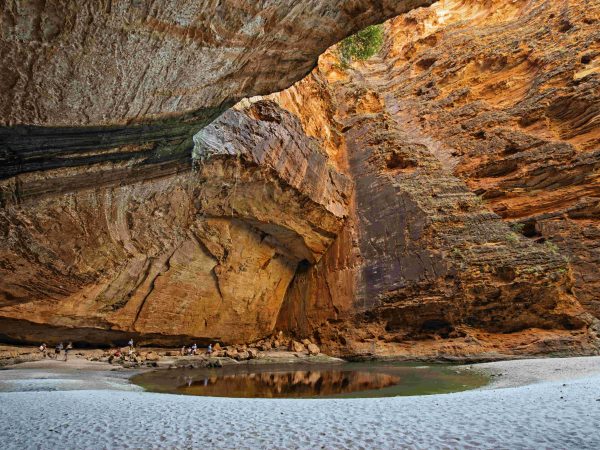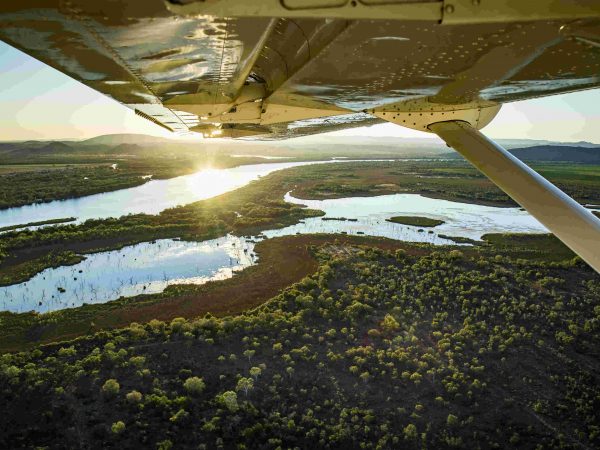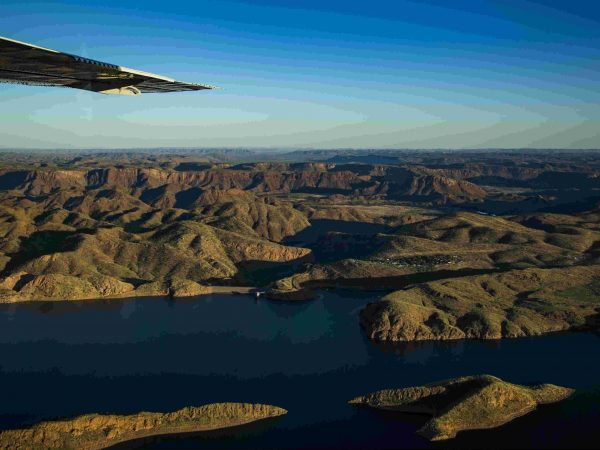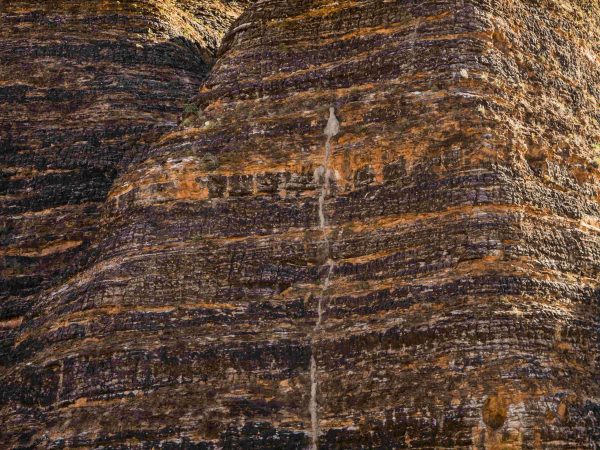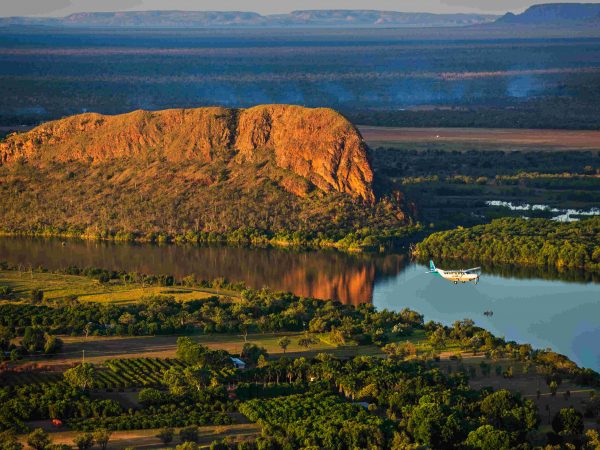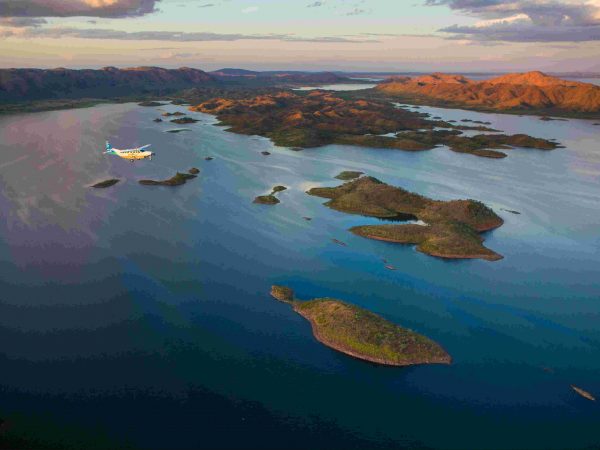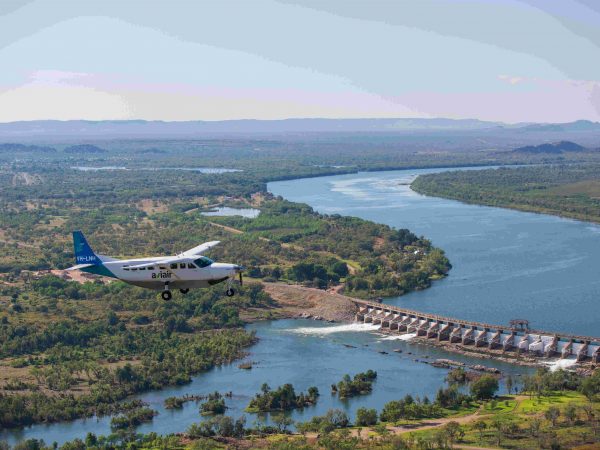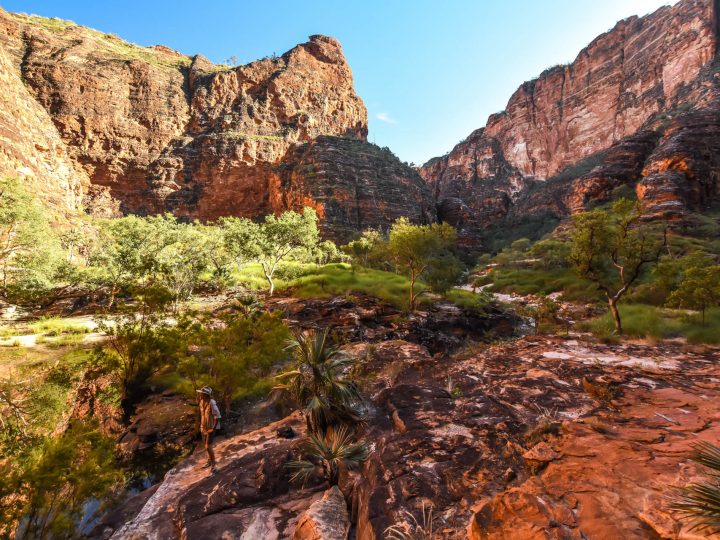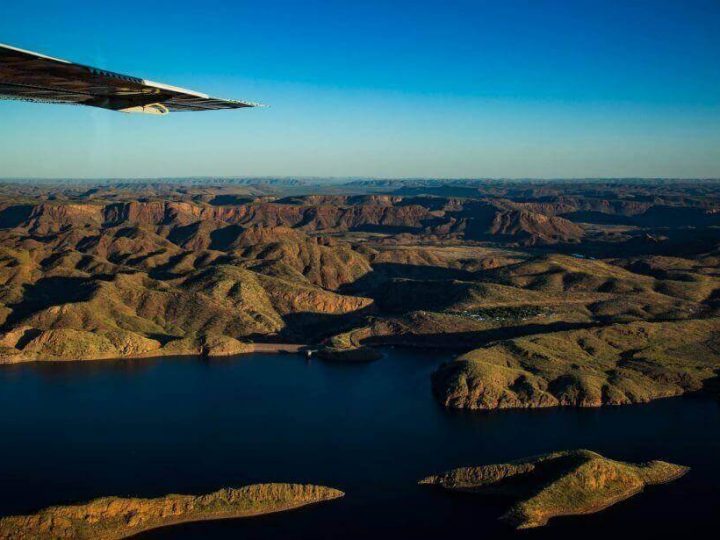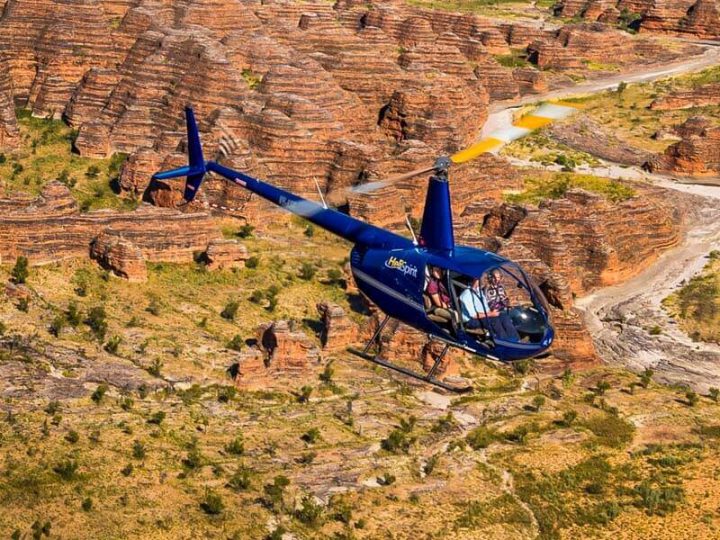
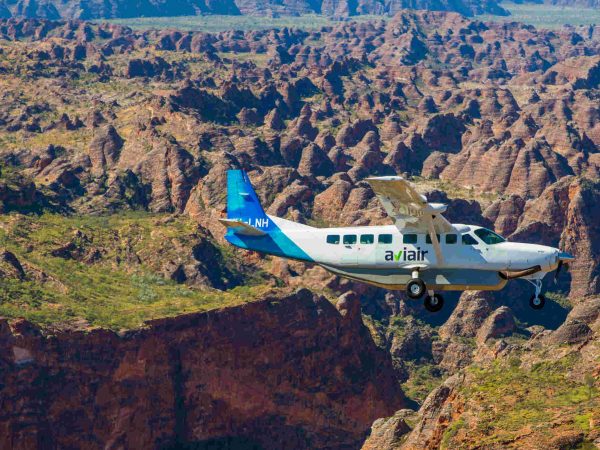
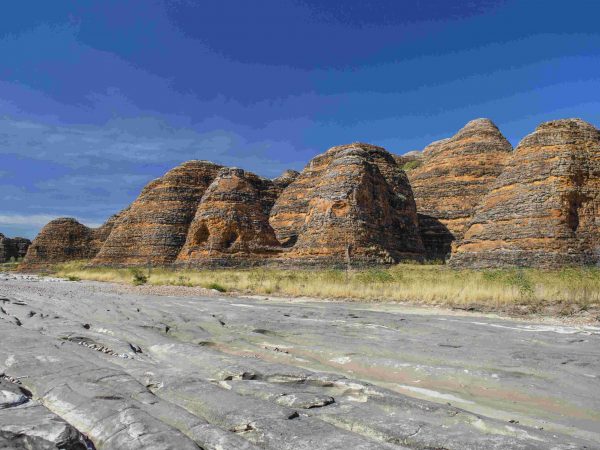
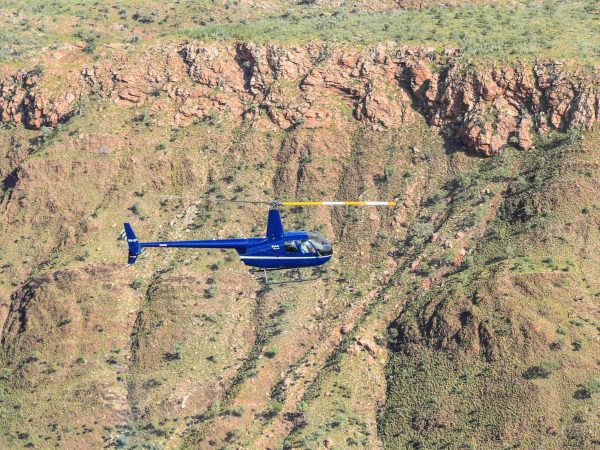
Kununurra
(Aboriginal meaning rivers) referring to the rivers around Kununurra such as the Ord River and Dunham River. There is a misunderstanding that Kununurra means Meeting of waters. Developed in 1961 to support the Ord river irrigation project and initially sustained a population of around 400 people. Today Kununurra supports a permanent population of around 7000, with these numbers doubling during the dry season with surge of tourists and seasonal workers. Its predicted with further stages of the Ord river irrigation project that numbers will rise to around 25000.
Diversion Dam
Diversion Dam completed in 1963 and was the first convex dam in the world, built on a natural rock bar called the bandicoot bar. At the time cost $9million. The dam consists of 20 radial gates, each 11m high, 15m wide and weighing 96 ton. The Dam was built to raise the water level for the gravity feed irrigation system flowing down into the Ivanhoe plains via the M1 or main irrigation channel beneath the Pumps House restaurant. They sayby raising just one of the gates 10cm allows 15000L/sec to flow. The Diversion dam is a spectacular sight during an air tour of Kununurra.
ORD Irrigation Area
ORD Irrigation Area stage 1 and 2 cover an area of 50,000 hectares stretching 50km NW of Kununurra all the way to the Keep river plains in the NT. Stage 1 ORIA combines Ivanhoe and Pack Saddle plains, which covers an area of 16,500ha. Pack Saddle plains sit above the water level unlike Ivanhoe valley, meaning the water must be pumped along these irrigation channel that run through the fields. Pack saddle plains originally tried to grow rice and Cotton, however large numbers of magpie geese and other pests ate the shoots before they could properly develop.
Now growing here is a variety of chickpea, rock melons, honeydew, watermelons, pumpkins and bananas to name a few. The majority however in the Pack Saddle plains is mangoes and the relatively new sandalwood tree. Stage 2 is around 33000Ha is size and stretches from WA to the Keep river in NT. Stage 3 of the Ord irrigation scheme is in development by a Chinese owned company KAI (Kimberly Agricultural Investments) who are investing 200 million and plan to grow sugar for biofuel.
Sandalwood Trees
Sandalwood treesare a parasite tree and use threehost trees to grow. Kununurra has around 3,800 haof sandalwood throughout both Packsaddle plainsand Ivanhoe plains, 1ha = 420trees = 311kg Oil = 2million AUD. Sandalwood growth in the wild wouldtake about 30 years but with the host trees after 15years the mature trees are uprooted and the oilsare extracted for pharmaceutical products such andperfumes, hand/face creams and candles. After 4years the seeds can also be used for somepharmaceutical and cosmetic purposes.
Sandalwood plantations are expected increase exponentially in the coming years.
Chia Seeds
Chia seeds – Kununurra farmers are among the leading producers of the hybrid seed in the world, turning over 750 tons per annum. This can all be witnessed during a Kununurra day tour on a flight with Aviair.
